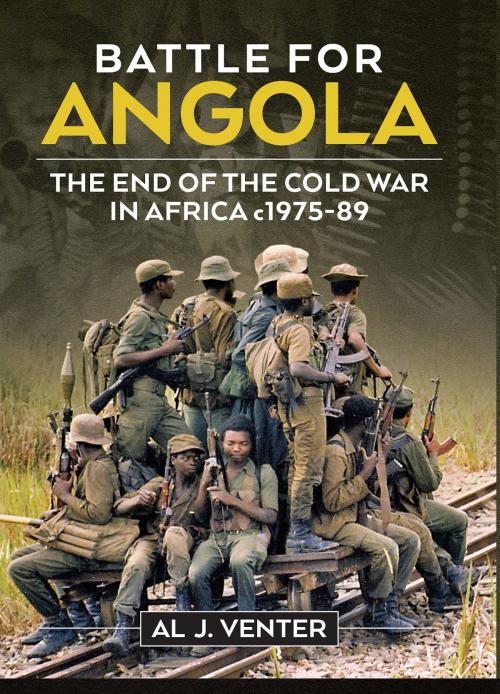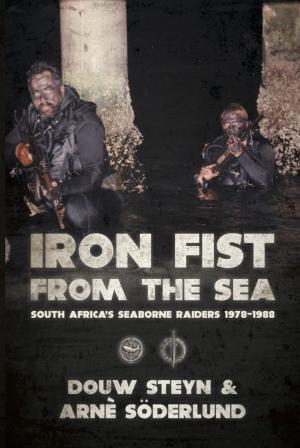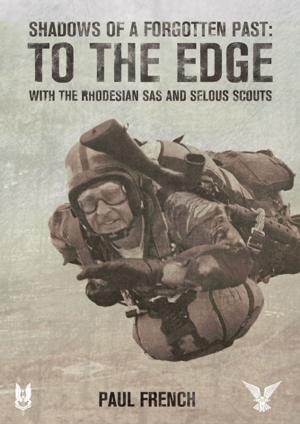Battle For Angola
The End of the Cold War in Africa c 1975-89
Nonfiction, Social & Cultural Studies, Political Science, Government, Communism & Socialism, History, Africa, Modern, 20th Century| Author: | Al J. Venter | ISBN: | 9781913118105 |
| Publisher: | Helion and Company | Publication: | April 3, 2017 |
| Imprint: | Helion and Company | Language: | English |
| Author: | Al J. Venter |
| ISBN: | 9781913118105 |
| Publisher: | Helion and Company |
| Publication: | April 3, 2017 |
| Imprint: | Helion and Company |
| Language: | English |
Following the publication of Al Venter’s successful Portugal’s Guerrilla Wars in Africa - shortlisted by the New York Military Affairs Symposium’s 'Arthur Goodzeit Book Award for 2013' - his Battle for Angola delves still further into the troubled history of this former Portuguese African colony. This is a completely fresh work running to almost 600 pages including 32 pages of color photos, with the main thrust on events before and after the civil war that followed Lisbon’s over-hasty departure back to the metrópole. There are also several sections that detail the role of South African mercenaries in defeating the rebel leader Dr Jonas Savimbi (considered by some as the most accomplished guerrilla leader to emerge in Africa in the past century). There are many chapters that deal with Pretoria’s reaction to the deteriorating political and military situation in Angola, the role of the Soviets and mercenaries in the political transition, as well as the civil war that followed. With the assistance of several notable military authorities he elaborates in considerable detail on South Africa’s 23-year Border War, from the first guerrilla incursions to the last. In this regard he received solid help from the former the head of 4 Reconnaissance Regiment, Colonel Douw Steyn, who details several cross-border Recce strikes, including the sinking by frogmen of two Soviet ships and a Cuban freighter in an Angolan deepwater port. Throughout, the author was helped by a variety of notable authorities, including the French historian Dr René Pélissier and the American academic and former naval aviator Dr John (Jack) Cann. With their assistance, he covers several ancillary uprisings and invasions, including the Herero revolt of the early 20th century; the equally troubled Ovambo insurrection, as well as the invasion of Angola by the Imperial German Army in the First World War. Former deputy head of the South African Army Major General Roland de Vries played a seminal role. It was he - dubbed ‘South Africa’s Rommel’ by his fellow commanders - who successfully nurtured the concept of ‘mobile warfare’ where, in a succession of armored onslaughts ‘thin-skinned’ Ratel Infantry Fighting Vehicles tackled Soviet main battle tanks and thrashed them. There is a major section on South African Airborne – the ‘Parabats’ –by Brigadier-General McGill Alexander, one of the architects of that kind of warfare under Third World conditions. Finally, the role of Cuban Revolutionary Army receives the attention it deserves: officially there were almost 50,000 Cuban troops deployed in the Angolan war, though subsequent disclosures in Havana suggest that the final total was much higher.
Following the publication of Al Venter’s successful Portugal’s Guerrilla Wars in Africa - shortlisted by the New York Military Affairs Symposium’s 'Arthur Goodzeit Book Award for 2013' - his Battle for Angola delves still further into the troubled history of this former Portuguese African colony. This is a completely fresh work running to almost 600 pages including 32 pages of color photos, with the main thrust on events before and after the civil war that followed Lisbon’s over-hasty departure back to the metrópole. There are also several sections that detail the role of South African mercenaries in defeating the rebel leader Dr Jonas Savimbi (considered by some as the most accomplished guerrilla leader to emerge in Africa in the past century). There are many chapters that deal with Pretoria’s reaction to the deteriorating political and military situation in Angola, the role of the Soviets and mercenaries in the political transition, as well as the civil war that followed. With the assistance of several notable military authorities he elaborates in considerable detail on South Africa’s 23-year Border War, from the first guerrilla incursions to the last. In this regard he received solid help from the former the head of 4 Reconnaissance Regiment, Colonel Douw Steyn, who details several cross-border Recce strikes, including the sinking by frogmen of two Soviet ships and a Cuban freighter in an Angolan deepwater port. Throughout, the author was helped by a variety of notable authorities, including the French historian Dr René Pélissier and the American academic and former naval aviator Dr John (Jack) Cann. With their assistance, he covers several ancillary uprisings and invasions, including the Herero revolt of the early 20th century; the equally troubled Ovambo insurrection, as well as the invasion of Angola by the Imperial German Army in the First World War. Former deputy head of the South African Army Major General Roland de Vries played a seminal role. It was he - dubbed ‘South Africa’s Rommel’ by his fellow commanders - who successfully nurtured the concept of ‘mobile warfare’ where, in a succession of armored onslaughts ‘thin-skinned’ Ratel Infantry Fighting Vehicles tackled Soviet main battle tanks and thrashed them. There is a major section on South African Airborne – the ‘Parabats’ –by Brigadier-General McGill Alexander, one of the architects of that kind of warfare under Third World conditions. Finally, the role of Cuban Revolutionary Army receives the attention it deserves: officially there were almost 50,000 Cuban troops deployed in the Angolan war, though subsequent disclosures in Havana suggest that the final total was much higher.















